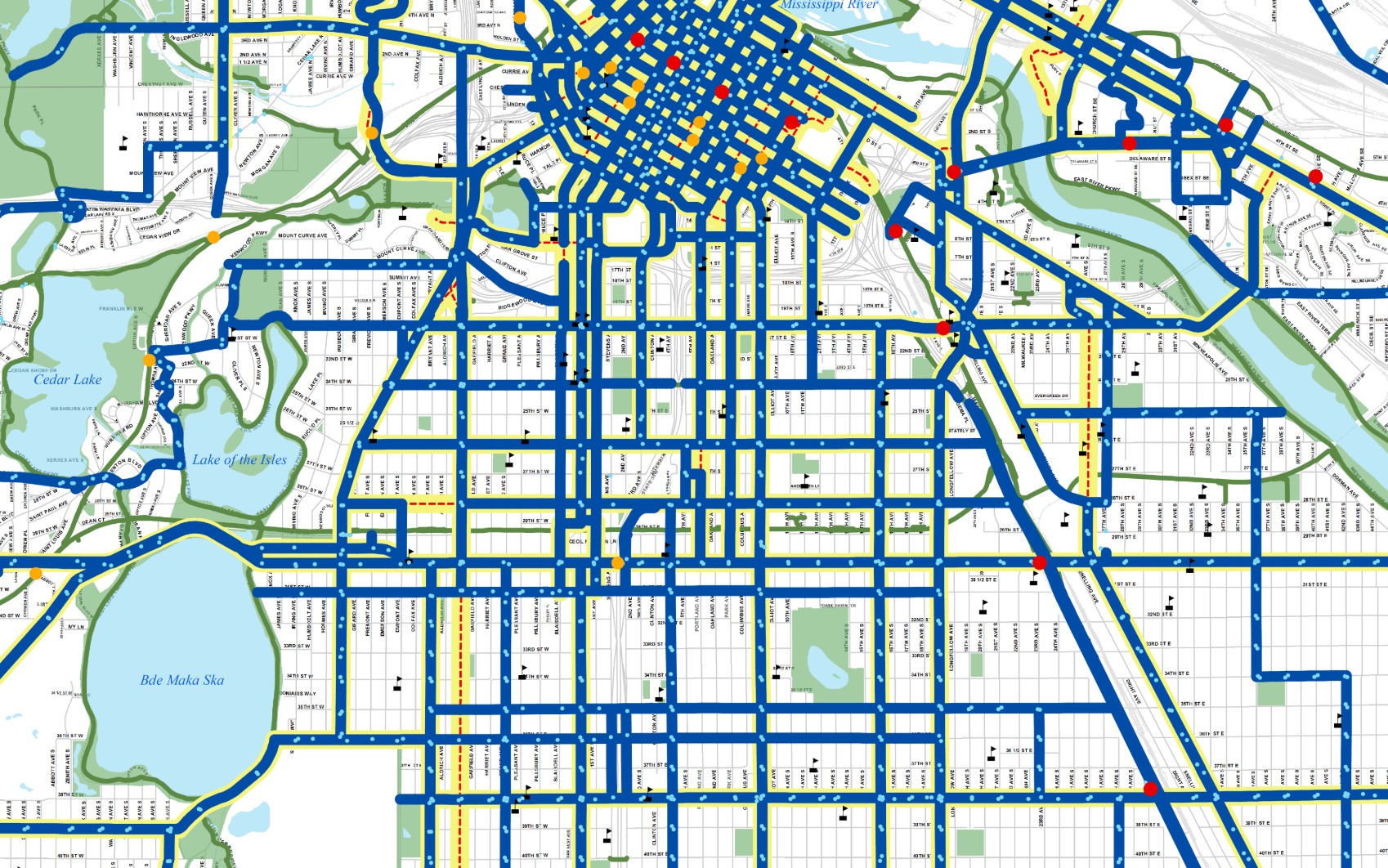
Walking has the lowest negative carbon impact compared to other transportation modes while generating high returns in public health and equity. Everyone is a pedestrian at some point in their day because every trip begins and ends with walking. Walking is a key component of successful public transit, supports vibrant business districts and healthy people, reduces carbon footprint, and contributes to safer neighborhoods by putting more eyes on the street.
Over 10% of trips in Minneapolis starting or ending in Minneapolis are less than one mile1 – a distance that takes the typical person 15 to 20 minutes walking. Minneapolis has over 2,000 miles of sidewalk.2 Unfortunately, pedestrians are overrepresented in the number of severe and fatal injuries on our street network, comprising nearly 1/3 of all total severe and fatal injuries.3 As the number of people walking continues to increase, it is critical that it is formally recognized as a mode of travel, and made more welcoming, accessible, and safer as a transportation option – which, without other conflicting modes, is inherently a safe activity.
2019 data shows people walk for 16% of their trips;4 by 2030 our goal is to increase that number to 25%. We’ll get there through a combination of improved conditions for people walking as well as land use and population growth trends that are shaped through the policies outlined in Minneapolis 2040.
Because many improvements that prioritize pedestrians also do the same for those bicycling, the strategies and actions listed here often support or are linked to bicycle strategies and actions.
Crashes resulting in severe injury or death

Source: Vision Zero Crash Study (2018)
- Metropolitan Council’s 2010 Travel Behavior Inventory, 10.6% of all trips.
- City of Minneapolis Public Works
- City of Minneapolis Vision Zero Crash Study (2018)
- Metropolitan Council, Travel Behavior Inventory, 2019.
Reaching our transportation goals requires strategic action. Listed below are strategies and actions that we plan to undertake in the next 10 years.
See also strategies
- Bicycle strategy 3
Prioritize a network of neighborhood greenways during the buildout of the All Ages and Abilities Network. - Street Operations 3
Plan for efficient and practical operations of people walking, biking, and taking micromobility or transit throughout the street design process. - Street Operations 4
Leverage City resources and partnerships to promote, educate and encourage walking, biking and transit as alternatives to driving. - Street Operations 5
Price and manage use of the curb to encourage walking, biking and using transit, and to discourage driving alone. - Street Operations 6
Induce regional mode shift by prioritizing pedestrian, bicycle, and transit facilities and operations into capital transportation projects. - Design 2
Foster vibrant public spaces for street life.
